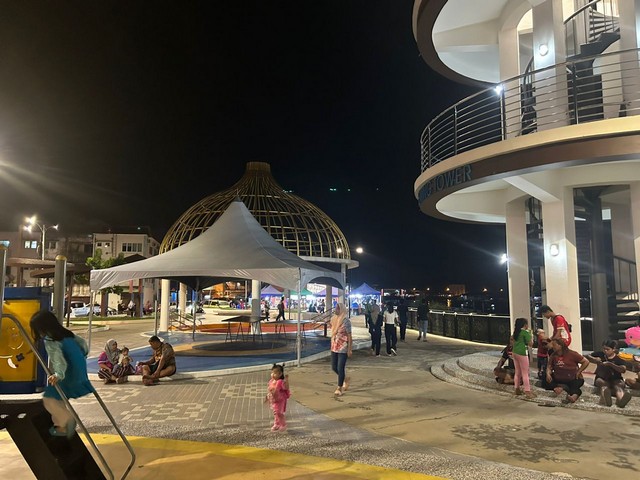Local governments may be in the lowest level of Malaysia’s three-tier government system, yet their roles and functions are crucial in enhancing the people’s socio-economic well-being in the country.
This is because access to government services that they deliver to citizens within their respective jurisdictions – be they infrastructure, economic or social in nature – are more direct than those from federal and state governments.
It is therefore imperative for local governments to improve their service delivery systems at all times to guarantee their efficiency and effectiveness.
At Limbang District Council (Majlis Daerah Limbang;MDL), various efforts have been undertaken as part of its commitment to deliver top-notch service to the people of Limbang District and practices of the “Community First” principle.
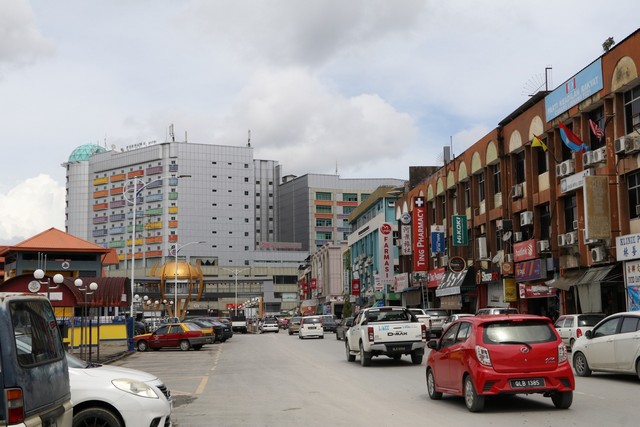
These efforts are also in line with Sarawak’s overall socio-economic aspirations through Post COVID-19 Development Strategy 2030. Examples are infrastructure projects involving public facilities such as pedestrian walks, overhead bridges, markets and hawker kiosks in the town area.
Additionally, there are Community Development programmes designed and implemented with the local community based on the UN Sustainable Development Goals, and monitored by Ministry of Public Health, Housing and Local Government Sarawak.
To ensure sustainability in the lives of the people in Limbang District, MDL continues to prioritise its “core business”, including rubbish collection; maintenance of waste disposal sites; and maintenance of roads, street lights, drainage and trees.
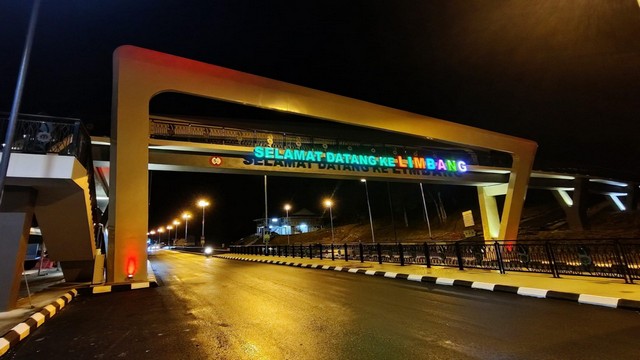
More importantly, the Council has taken steps to modernise its administration, from incorporating technology in its administrative process, to receiving public complaints and feedback regarding its services from people through the State-owned public communication channel Talikhidmat.
The use of technology in enhancing its daily services, it adds in a written response in RAKAN Sarawak, has greatly helped in reducing manual processes, allowing users or customers to complete matters with MDL without the need to be physically present at its office.
“(The aforementioned initiatives) aim to improve the quality of life of the people in Limbang and ensure that better services are provided to them.
“The impact on the organization is an increase in resident satisfaction, operational effectiveness, and reputation of the Limbang District Council as a competitive local authority that aligns with global development,” it states.
Organisational Effort Towards Enhanced Service Delivery
The key to MDL’s endeavour in advancing the quality, governance and operations of its service delivery lies within strengthening itself as an organisation.
A number of initiatives has been carried out to that end; among which are improvements to its organisational structure. At present, services delivered by the Council are through its sections or units, each having its own functions and objectives definitive enough to prevent any confusion in service execution.
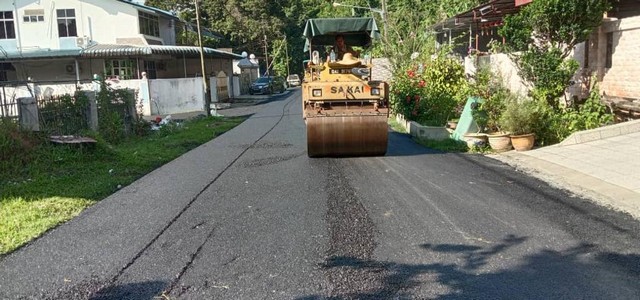
There are seven sections in MDL; five of which implement main functions of the Council, while the remaining two perform support functions (Table 1). Regardless of which section they come from, Council staff members are reminded time and time again to be transparent and amiable in carrying out their tasks.
Also vital in strengthening its service delivery capability is the Council’s close cooperation with its stakeholders through various engagement activities, whether with the media and grass-root leaders externally, or between staff members and Councillors in the organisation.
Through the media, MDL is able to disseminate information that are essential for public awareness.
In addition, it engages with village heads and community leaders through a series of Randau sessions held every year to understand better regarding any arising issues that can be resolved accordingly.
“The cooperation between Councillors and staff has created a number of policies that has given advantages and convenience to the Limbang community.
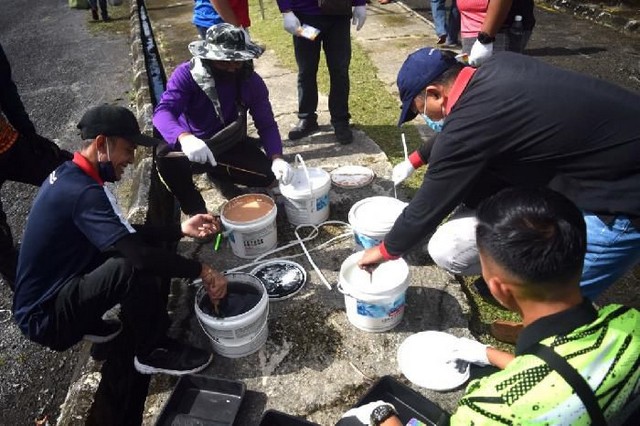
“All policies enacted always focus on the interests of the public so that sustainability can be maintained,” the Council adds, adhering to its vision of “Greater Sustainable Life.”
| Section | Function |
| Administration / Management Services | As secretariat of the Limbang District CouncilImplement Council policy / decisionManage administration of Council’s organisationCoordinate roles and functions of all sectionsManage staffing-related mattersManage human resource development programmes |
| Treasury | Manage financial matters of the organisationConduct measurements of individual or government buildingsProcess all bills to taxpayersCollect payment of assessment tax and licences |
| Rating and Valuation | Conduct surveys and evaluation on taxable property for assessmentGenerate and issue assessment tax bills, notices of amendments to list of assessees, and reminder notices |
| Public Works | Plan, design, implement and monitor development projectsControl and issue building construction permits and occupancy certificatesCare and maintain public facilitiesMaintain roads, pedestrian walks, kerbs and landscapes |
| Library / Community Development | Provide sufficient reading materialsProvide reference and study facilitiesEnsure comfort to all library visitors |
| Enforcement | Enforce relevant lawsImplement Council policiesMaintain safety of public facilities and propertyProvide public assistance |
| Public Health and Urban Service | Environmental Sanitation and Mobile Toilet Facilities UnitCleaning services for main roads, roadside and side-walkSupervision and enforcementProvision and supervision of mobile public toilet facilitiesGrass cutting services in urban areas, Pekan Medamit, Pekan Tedungan and residential areasEnforcement of laws and policies Dog Control, Nuisance and Vector Control UnitOperation, control and elimination of stray dogsLicencing of dogsInvestigation and follow-up action to public complaints (due to nuisance)Actions towards notifications on dengue cases and outbreaksInspection of larvae, prevention activities, control and fumigation within Council’s jurisdictionControl of larvae in septic tanksEnforcement of Destruction of Disease-Bearing Insect Act 1975 (Act 154)Control of vector-borne diseasesEnforcement of laws and policies Building Sanitation UnitInspection of building plansSite inspection for preliminary construction worksBuilding inspection for issuance of occupancy certificatesEnvironmental affairs (Building)Enforcement of laws and policies Market and Hawker Management and Licencing UnitApplication and issuance of new licencesContinuation and termination of business licencesOther related licencing matters (e.g. change of ownership, change of address, licence cancellation, etc.Permit for entertainment and petroleum and gas storageMonitoring and recording of traders’ presence in Council buildingsCleaning services for markets, tamu, Medan Niaga Bangkita and Council-owned night marketsInvestigation and follow-up action to public complaintsManagement of daily hawkers and collection of hawker taxIntegrated operations with other agenciesEnforcement of laws and policies Food Premises Standard Management UnitRoutine inspection on coffee shops, restaurants, canteens, stalls, bakeries, etc.Food premises gradingFood samplingEnforcement of compound, laws and policiesControl of water and food-borne diseasesInvestigation and follow-up action to public complaintsFood handler records and health card issuanceSide-walk use (dining tables)Health education Public Toilet Management UnitRoutine inspection on Council-owned public toiletsAuditing of public toilets owned by the Council and private entitiesCleaning services for Council-owned public toiletsInvestigation and follow-up action to public complaintsRepair works and new projects on public toiletsHealth education and promotionEnforcement of guidelines and policies Drainage System UnitRoutine inspection on drainage cleaning services in Limbang Town and residential areas as well as other areas under the Council’s jurisdictionUpdate of drainage system monitoring records and reportsRepair works and new projects on drainageInvestigation and follow-up action to public complaintsEnforcement of guidelines and policies Solid Waste and Landfill Management UnitRoutine inspection and monitoring of rubbish collection services and maintenance of Council’s Level 2 landfillsManagement of weighbridges at landfillsCreation and update of monitoring records and amount of solid waste disposedImplementation of 3R activities, No Plastic Bag Day, gotong-royong, etc.Management of new applications for solid waste collectionManagement of illegal dumpingProvision of additional rubbish bins upon request/directiveInvestigation and follow-up action to public complaintsEnforcement of laws, guidelines and policies |
Table 1: List of Limbang District Council’s sections and their respective functions. (Source: https://limbangdc.sarawak.gov.my/web/subpage/webpage_view/82)
About Limbang District Council
Formed on 1 March 1948 under The Local Authority (Constitution) Order, 1948, Limbang District Council (Majlis Daerah Limbang; MDL) is responsible for providing local government services to the entire district of Limbang, particularly in urban and residential areas. The Council also has allocation for development in rural areas under its jurisdiction.
Limbang District in Numbers:
- Area size: 3,975 sq. km
- Population (as of 2020): 45,061
- Population Distribution: 3.2%
- Sub-district: Ng. Medamit
Source: Limbang District Council’s official website, Sarawak Facts and Figures 2023
Reference:
Awortwi, N. (2021, November 25). Promoting inclusive service delivery globally. The Hague Academy. https://thehagueacademy.com/news/promoting-inclusive-service-delivery-globally/
Commonwealth Local Government Forum. (n.d.). Malaysia. https://www.clgf.org.uk/regions/clgf-asia/malaysia/
Majlis Daerah Limbang. (2024, June 13). Laman Web Rasmi Majlis Daerah Limbang. https://limbangdc.sarawak.gov.my/web/home/index/


